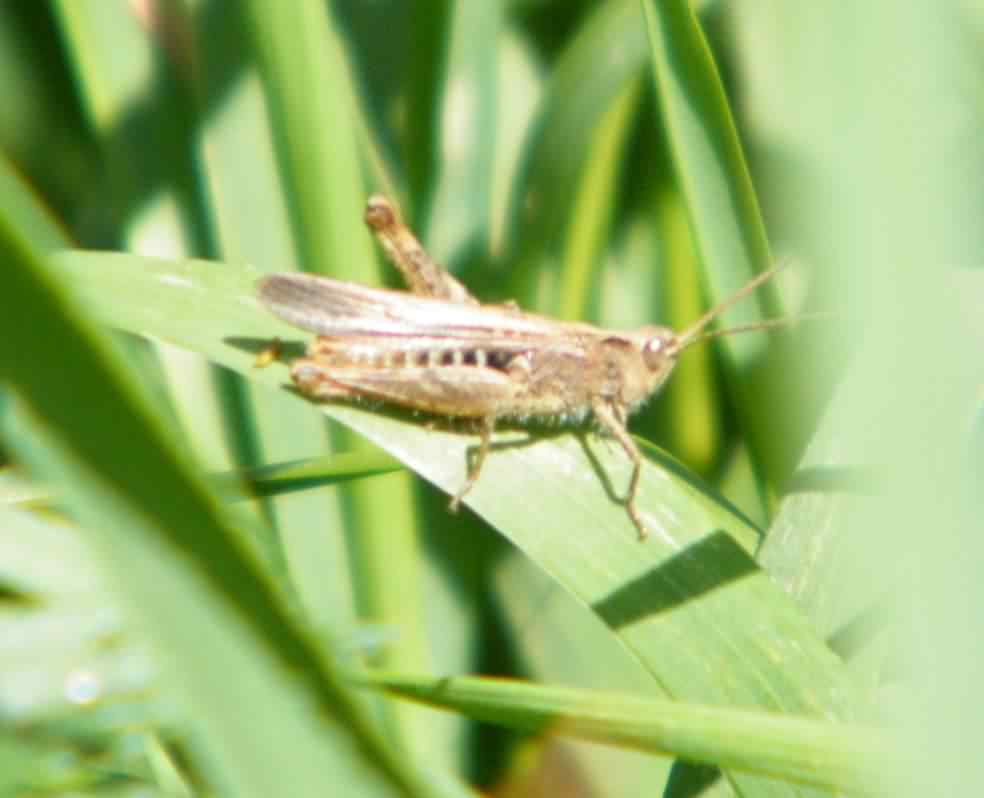


Photo ©2015 - A. Gomez
Photos ©2010–
Click any photo for a larger image
Common Field Grasshopper - Chorthippus brunneus
Family - Acrididae
Also known as - the Field Grasshopper
A common species over Europe and the U.K, the Common Field Grasshopper is probably our most frequently seen grasshopper found in dry parkland, roadsides, waste ground, grass lands and meadows. It is fairly large species reaching 18–24mm (0.701.0in) in length and can be found wide range of colours including green, brown and purple, usually with a variable amount of black, brown or grey mottling. The tough forewings, which protect the delicate membranous hindwings, are long, and in common with all Chorthippus species, have a bulge near their base. Most individuals have an orange tinge at the tip of the abdomen. This species can be identified by the low number of "stridulatory" pegs on the legs used to produce the very characteristic song (stridulation, the production of sound by rubbing a file across a membrane).
This grasshopper is a strong flier, and is active in warm weather on warm days it can frequently be seen sunning itself on walls, vegetation, bare ground and paths. Their songs produced by stridulation are made by scraping the hind legs against veins on the forewing. During summer, females lay a large egg pod containing up to 15 eggs in dry ground just below the surface, or sometimes in anthills. The eggs, which over winter, hatch in May with adults appearing in June. They are an Herbivorous species, feeding mainly on grasses. Adult Field Grasshoppers are better able to survive cold weather, occasionally surviving until December. The underside of body is distinctively hairy in both sexes, they are winged, fly well and have been known to swarm.
 |
 |
 Photo ©2015 - A. Gomez |
Photos ©2010– Click any photo for a larger image | ||
Site design ©1999– Brickfields Country Park - Privacy -